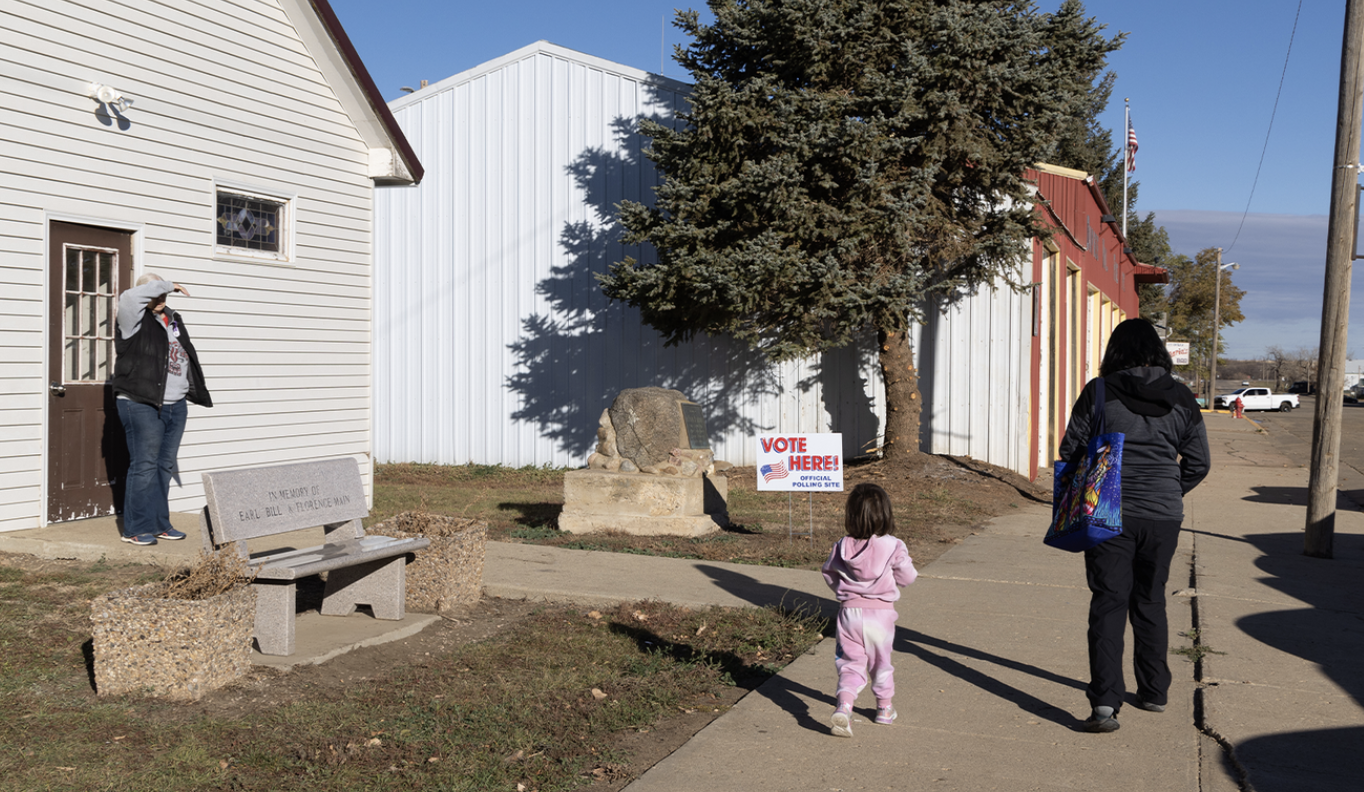
- Details
- By Neely Bardwell
The Brennan Center for Justice at NYU Law on Monday released a 16-page study, enittled“Voting on Tribal Lands: Barriers to Native American Turnout,” on Monday. The study found that between 2012 and 2022, voter participation in federal elections for people living on tribal lands was on average 11 percentage points lower than those living off tribal lands in the same states.
Chelsea Jones and Coryn Grange, the study’s authors, write: “For far too long, Native Americans have faced barriers to voting that impede their full political participation. While de jure disenfranchisement of Native Americans no longer exists, de facto disenfranchisement continues to flourish, as is evident in the turnout gap between voters on and off tribal lands.”
Research for this study was conducted prior to this year's election, therefore the study does not include data on how Native Americans voted in the 2024 presidential election.
The study looked at voter turnout among people living on tribal lands, specifically in 21 states that have more than 5,000 people living on federally recognized tribal lands with more than 20 percent of that tribal land population identifying as Native American. The voter turnout of those who reside on tribal lands was compared to the voter turnout of those who don't.
“In 2020, for example, had the nearly 900,000 voters on the tribal lands we studied turned out at the same rate as others in their states, roughly 160,000 more votes would have been cast. In addition, turnout was lower on tribal lands with higher shares of Native American adults. Voters on tribal lands were also 7 percentage points less likely than those not on tribal lands to vote by mail or vote early. The U.S. government’s persistent inaction to improve voting conditions for Native Americans has resulted in widespread disenfranchisement and furthered a legacy of mistrust in the political system.”
The states included in the study were Alaska, Arizona, California, Colorado, Idaho, Kansas, Michigan, Minnesota, Mississippi, Montana, Nebraska, New Mexico, Nevada, North Carolina, North Dakota, Oregon, South Dakota, Utah, Washington, Wisconsin, and Wyoming.

It is widely known that Native voter turnout consistently lags that of other groups. This is due to various issues and barriers to mail, early voting, polling places, and even registration to vote on tribal lands. Using millions of voter records from 2012 to 2022, Jones and Grange found that voter turnout during that period was substantially lower for people living on tribal lands, particularly those where Native Americans are concentrated.
Of the tribal lands studied, 53 percent of the population in 2020 identified as Native American.
The authors recognize that accurately surveying Indian Country is difficult. There are nearly 1.3 million American Indian or Alaska Native people living on federally recognized tribal lands in the United States. The voter records used for the study are “snapshots” of the greater AI/AN populations. The “tribal lands” data is from the U.S. Census–designated, federally recognized American Indian Reservations.
“The geographic isolation of rural tribal lands is one of the largest obstacles to voting. Election offices are typically located outside of tribal lands; for instance, on the Pyramid-Lake Reservation in Nevada and the portion of the Navajo Nation in Utah, these offices are more than 100 miles away. Some reservation residents, like members of the Karuk Tribe in California, must drive across dangerous terrain to access their county seats for election services.”
More Stories Like This
Native News Weekly (August 25, 2024): D.C. BriefsUS Presidents in Their Own Words Concerning American Indians
Senate Committee on Indian Affairs Passes 12 Bills to Strengthen Tribal Communities
Deb Haaland Tours CNM Workforce Facilities, Highlights Trade Job Opportunities
Federal Court Dismisses Challenge to NY Indigenous Mascot Ban
Help us defend tribal sovereignty.
At Native News Online, our mission is rooted in telling the stories that strengthen sovereignty and uplift Indigenous voices — not just at year’s end, but every single day.
Because of your generosity last year, we were able to keep our reporters on the ground in tribal communities, at national gatherings and in the halls of Congress — covering the issues that matter most to Indian Country: sovereignty, culture, education, health and economic opportunity.
That support sustained us through a tough year in 2025. Now, as we look to the year ahead, we need your help right now to ensure warrior journalism remains strong — reporting that defends tribal sovereignty, amplifies Native truth, and holds power accountable.
 The stakes couldn't be higher. Your support keeps Native voices heard, Native stories told and Native sovereignty defended.
The stakes couldn't be higher. Your support keeps Native voices heard, Native stories told and Native sovereignty defended.
Stand with Warrior Journalism today.
Levi Rickert (Potawatomi), Editor & Publisher


